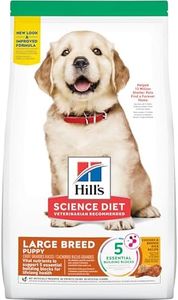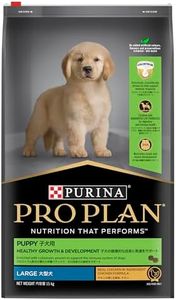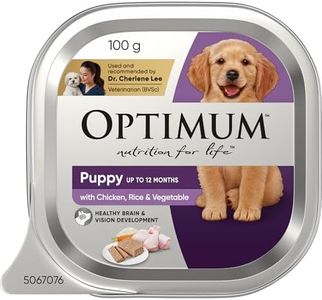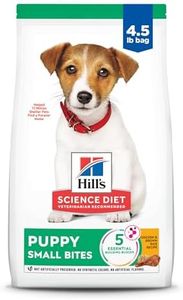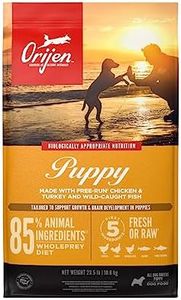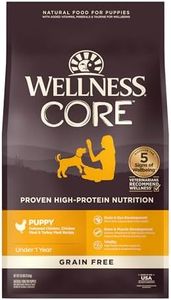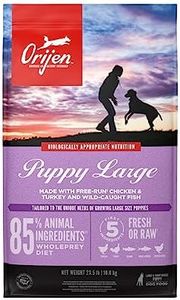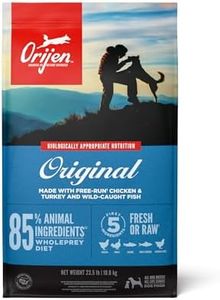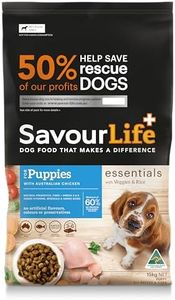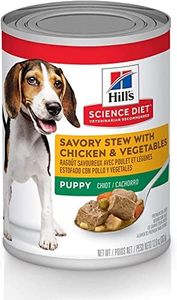We Use CookiesWe use cookies to enhance the security, performance,
functionality and for analytical and promotional activities. By continuing to browse this site you
are agreeing to our privacy policy
10 Best Puppy Foods
From leading brands and best sellers available on the web.Buying Guide for the Best Puppy Foods
Choosing the right puppy food is essential for your puppy’s health, growth, and overall development. Puppies have unique nutritional needs compared to adult dogs, so it’s important to ensure their food is specially formulated for their stage of life. When shopping for puppy food, focus on understanding the key ingredients and nutritional information, while considering your puppy’s breed, size, and any specific health concerns. A thoughtful approach will help support your puppy’s immune system, bones, muscle development, and overall energy throughout their growing months.Protein ContentProtein is crucial for a puppy’s growth because it supports muscle and tissue development. Most puppy foods contain more protein than adult formulas, usually ranging from 22% to 32%. Lower protein levels (around 22%) can work for smaller breeds or less active puppies, while higher levels (26%-32%) are great for larger breeds and energetic pups. Choose a protein level that matches your puppy’s breed, size, and activity level—active or larger puppies benefit from higher protein, while smaller, less active breeds may not need as much.
Fat ContentFat provides the energy puppies need for their active lifestyle and also helps in absorbing certain vitamins. Puppy foods typically have fat content between 8% and 20%. Lower fat foods (8%-12%) are often suitable for puppies who are less active or prone to gaining weight, whereas more active puppies can handle higher fat foods (13%-20%) for more energy. It’s important to match the fat content to your puppy’s activity level and natural build to prevent excessive weight gain.
Calcium and PhosphorusCalcium and phosphorus are minerals that play key roles in developing your puppy’s bones and teeth. Foods for puppies usually have a ratio of around 1.2:1 calcium to phosphorus. If your puppy is a large breed, these levels are especially important to prevent bone and joint problems. Regular puppy food often covers small and medium breeds, but if you have a large breed puppy, choose food labeled for large breeds to ensure proper balance and mineral content.
Kibble Size and TexturePuppy food comes in different kibble (the dry pieces) sizes and textures. Very tiny or toy breed puppies need smaller, softer kibbles that are easy to chew and swallow, whereas medium and large breed puppies can handle slightly larger or crunchier pieces. If your puppy seems to struggle with their food, try switching to a different kibble shape or moistening the food with a little water.
Ingredient QualityThe ingredients used in puppy food can tell you a lot about its quality. Look for real meat, fish, or poultry listed as the first ingredient, which signals a quality protein source. Avoid foods with too many fillers like corn or soy, artificial colors, or unrecognizable by-products. Choosing food with wholesome, simple ingredients can help ensure your puppy gets the best nutrition without unnecessary additives.
Dry vs. Wet FoodPuppy food comes in both dry (kibble) and wet (canned) forms. Dry food is convenient and helps keep teeth clean, while wet food can be more palatable and hydrating for some puppies. Some owners choose to mix the two, especially for picky eaters or puppies who need encouragement to eat. Consider your puppy’s chewing ability, preferences, and your own lifestyle when deciding between dry, wet, or a combination.


